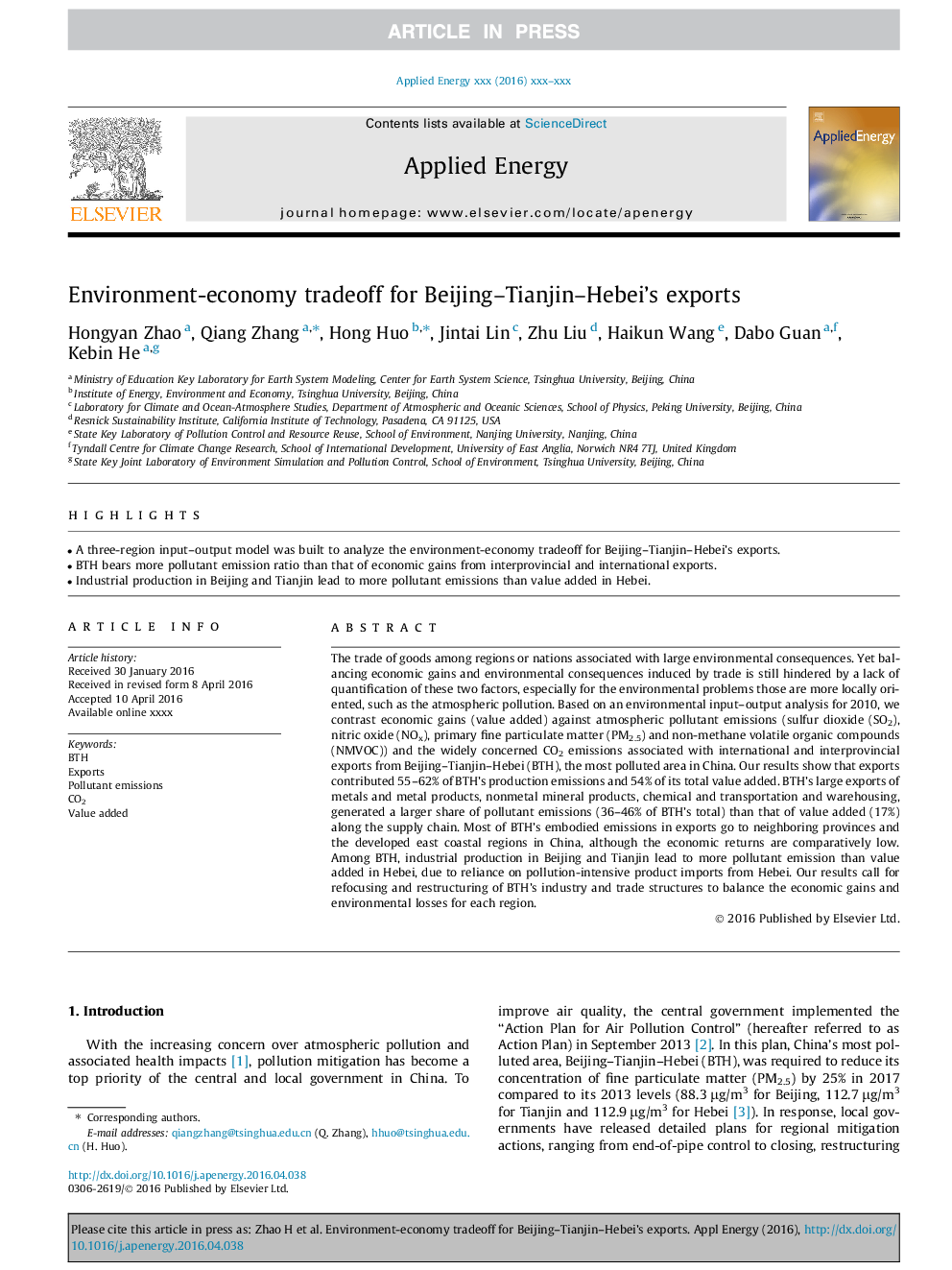| Article ID | Journal | Published Year | Pages | File Type |
|---|---|---|---|---|
| 4916924 | Applied Energy | 2016 | 10 Pages |
Abstract
The trade of goods among regions or nations associated with large environmental consequences. Yet balancing economic gains and environmental consequences induced by trade is still hindered by a lack of quantification of these two factors, especially for the environmental problems those are more locally oriented, such as the atmospheric pollution. Based on an environmental input-output analysis for 2010, we contrast economic gains (value added) against atmospheric pollutant emissions (sulfur dioxide (SO2), nitric oxide (NOx), primary fine particulate matter (PM2.5) and non-methane volatile organic compounds (NMVOC)) and the widely concerned CO2 emissions associated with international and interprovincial exports from Beijing-Tianjin-Hebei (BTH), the most polluted area in China. Our results show that exports contributed 55-62% of BTH's production emissions and 54% of its total value added. BTH's large exports of metals and metal products, nonmetal mineral products, chemical and transportation and warehousing, generated a larger share of pollutant emissions (36-46% of BTH's total) than that of value added (17%) along the supply chain. Most of BTH's embodied emissions in exports go to neighboring provinces and the developed east coastal regions in China, although the economic returns are comparatively low. Among BTH, industrial production in Beijing and Tianjin lead to more pollutant emission than value added in Hebei, due to reliance on pollution-intensive product imports from Hebei. Our results call for refocusing and restructuring of BTH's industry and trade structures to balance the economic gains and environmental losses for each region.
Related Topics
Physical Sciences and Engineering
Energy
Energy Engineering and Power Technology
Authors
Hongyan Zhao, Qiang Zhang, Hong Huo, Jintai Lin, Zhu Liu, Haikun Wang, Dabo Guan, Kebin He,
